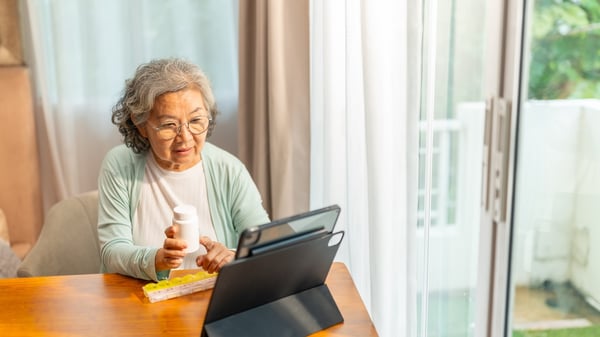How Telepharmacy Drives Healthcare Equity for Vulnerable Populations

The conversation around healthcare quality often overlooks a fundamental, systemic failure: the crisis of healthcare inequity. Vulnerable populations frequently face barriers to healthcare access. Rural and low-income Americans face limited insurance coverage, geographic isolation, and financial strain, often pushing patients toward costly emergency care (averaging $1,500 to $3,000 per visit) instead of preventive treatment. Further, seniors with complex needs are left without consistent access to primary care, despite most wishing to age at home.
These inequities are deeply interconnected. When access falters, medication adherence drops. When adherence drops, costs soar. The solution shouldn’t be adding more services. Instead, it’s time to redesign care delivery.
By embracing pharmacy technology and telepharmacy, health organizations can close these gaps and ensure every patient, regardless of race, geography, or income, has reliable access to the care they deserve.
The crisis of healthcare inequity and its impact
For too long, the promise of quality healthcare has remained out of reach for vast segments of the population. This isn't just a matter of clinical outcomes, but a structural crisis of healthcare equity where systemic barriers prevent vulnerable populations from accessing the sustained, reliable care they need.
The result is a landscape riddled with deepening healthcare disparities. Whether driven by geographic isolation, socio-economic status, language barriers, or transportation challenges, these access deficits translate directly into poorer health outcomes and higher costs.
For health plans and care providers focused on quality metrics or value-based care, these disparities are a systemic drag on performance, making it nearly impossible to achieve high Star Ratings or meet core quality benchmarks. Key barriers to access often include:
- Geographic isolation: Lack of proximity to physical pharmacies or clinics.
- Socio-economic strain: Inability to afford transportation or time off work for appointments.
- Language and cultural gaps: Difficulty communicating effectively with care providers.
- Technology access: Limitations on using digital health tools required for remote interactions.
But, health plans should look beyond quality measures and focus on ensuring the people who need care are able to access it. Patients in underserved areas often face fractured care models, leading to missed appointments, untreated symptoms, and, most critically, gaps in essential pharmacy support. Without consistent access to a trusted healthcare professional, rates of non-adherence skyrocket.
In this environment, medication adherence drops, costly interventions become inevitable, and the effectiveness of even the most sophisticated medication management solutions is severely undermined. The crisis of healthcare inequity, then, is a measurable system failure that begins with a lack of consistent, accessible professional connection.

Telepharmacy as a bridge to better healthcare access
In order to prevent healthcare inequity from becoming even more of a challenge than it currently is, the pharmacy industry demands a technological solution that lowers patient barriers while delivering clinical excellence. When it comes to realizing healthcare equity, telepharmacy is the infrastructure needed to dismantle the geographic and logistical barriers that perpetuate healthcare disparities.
Cost savings
For vulnerable populations, the indirect costs of care often outweigh the direct ones. Telepharmacy eliminates the financial burden of travel, parking, and lost wages from taking time off work for appointments.
When utilizing telepharmacy for proactive medication management solutions, health plans are positioned to reduce the risk of expensive emergency room visits and hospital readmissions that result from poor adherence and unmanaged chronic conditions. This shift optimizes care spend and drives better performance in value-based care models.
Access to medications
2021 data indicates that about 80% of American counties have “healthcare deserts,” meaning these communities lack the necessary infrastructure to ensure residents can access pharmacies, hospitals, primary care providers and more. Couple that with the fact that over 1,000 pharmacies have closed nationwide, and it’s clear that accessing necessary healthcare services is an undeniable struggle across the country.
Telepharmacy ensures continuity of care by connecting patients directly with licensed clinicians, especially when living within healthcare deserts. This dramatically improves access for individuals who can’t travel due to distance, disability, or lack of transportation. By making consultations digitally accessible, patients receive the clinical oversight necessary for accurate prescriptions and comprehensive health planning, thereby removing a critical first hurdle to medication adherence.
Improved patient communication
Digital pharmacy technology platforms integrate sophisticated communication tools that facilitate proactive, pharmacist-led engagement. This focus on personal interaction means high-value follow-up messaging and care reinforcement are delivered directly to patients from a trusted clinician. Additionally, the ability for remote pharmacists to consistently check in and reinforce care instructions is particularly valuable for vulnerable populations dealing with complex regimens or those who lack a strong, consistent in-person support system. As a result, messages delivered via the platform can help boost medication adherence rates.
Telepharmacy moves beyond convenience by introducing a scalable, cost-effective method for ensuring that essential clinical pharmacy support is available to every member, regardless of their location or circumstance. It provides the technological foundation for closing care gaps and establishing true healthcare equity.
How remote pharmacists drive healthcare equity among vulnerable populations
Telepharmacy allows remote pharmacists to engage patients through secure, digital channels, often via easy-to-use mobile applications, regardless of where the patient lives. This re-engineers access in several powerful ways:
- Geographic neutrality: Remote pharmacists can reach patients in rural or medically underserved urban areas who cannot physically travel to a clinic or pharmacy, eliminating transportation as a barrier to receiving essential medication management solutions.
- Time flexibility: Digital scheduling and on-demand consultations empower patients to receive care that fits their life and work schedules, directly addressing a primary barrier for the working vulnerable populations.
- Personalized, patient-centric care: By removing the time constraints of a retail environment, telepharmacy consultations ensure pharmacists can spend focused, quality time with patients, leading to stronger relationships and significantly improved rates of medication adherence.
- Linguistic and cultural matching: Advanced pharmacy technology platforms, like the BeWell platform, can intelligently match patients with remote pharmacists who speak their native language or possess specific clinical expertise, ensuring trust and clarity in communication.
The deployment of telepharmacy successfully breaks down the physical barriers to care. But, achieving true healthcare equity requires a high-quality, clinically impactful interaction.

Improving healthcare equity with modern medication therapy management solutions
The technological foundation of telepharmacy is the undeniable path to bridging healthcare disparities, but technology alone is insufficient. To genuinely drive healthcare equity and improve outcomes for vulnerable populations, the technology must be paired with clinical excellence and strategic operational deployment. This integration is the core mission of modern medication management solutions.
For health plans seeking to transition beyond a compliance mindset, the solution lies in leveraging sophisticated pharmacy technology to execute proactive and personalized care. This is the premise of intelligent MTM, and the reason why platforms are transforming the delivery model.
The BeWell with Aspen RxHealth platform is engineered to connect the dots established by the need for equitable access:
- Intelligent pharmacist-patient matching: The platform utilizes proprietary algorithms that move beyond basic assignment. It strategically matches patients with remote pharmacists based on crucial factors often overlooked in traditional care models, including:
- Language and cultural fit to ensure clear, empathetic communication and reduce linguistic barriers.
- Clinical specialty, ensuring the patient receives advice from a pharmacist with deep, relevant expertise in their specific chronic condition.
- Geography and scheduling to maximize the opportunity for successful, patient-friendly consultation times.
By enabling remote pharmacists to practice at the top of their license, the BeWell platform elevates the quality of care delivered. These licensed clinicians are empowered to focus solely on the patient’s clinical needs, providing in-depth counseling that drastically improves medication adherence and overall health literacy for vulnerable populations.
Additionally, for in-house teams in need of extra support to service their communities, pharmacies, and health plans can use Alliance by Aspen RxHealth to tap into Aspen RxHealth’s nationwide network of pharmacists. By deploying this approach, health plans gain a scalable, reliable engine for closing quality gaps.
The combination of flexible telepharmacy access and intelligent clinical matching ensures that high-quality, personalized medication management solutions are not only available but are being successfully delivered, turning the challenge of healthcare disparities into a measurable clinical and competitive advantage.
To book your demo of Alliance by Aspen RxHealth or BeWell with Aspen RxHealth, reach out today!
